Looking for another interesting plant for your plant collection? The distinctive Rhaphidophora tetrasperma plant is an excellent choice if you’re searching for a little vining plant to add to your greens. Also, given their reputation as small-sized climbers, these Mini Monsteras may make excellent feature houseplants if given the right conditions.
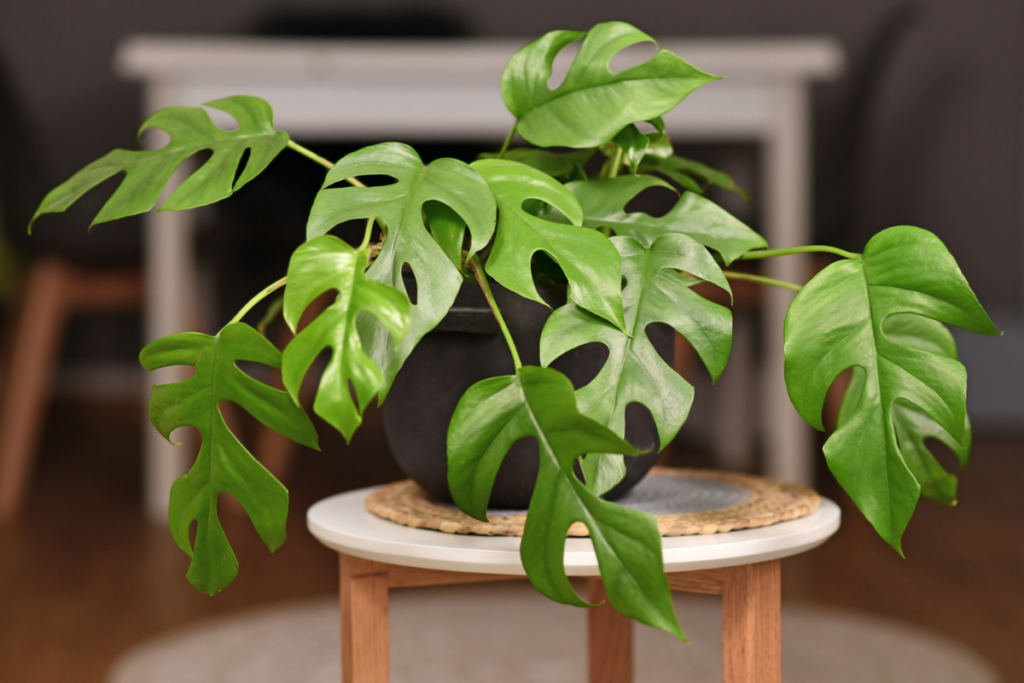
This Rhaphidophora Tetrasperma, often known as “Mini Monstera,” is a rare plant that is found in the tropical forests of Malaysia and Southern Thailand. As ornamental plants, they can be used both indoors and outdoors, especially if you have a spacious living room. They look great in the alley or at the front entrance. This plant will surely catch the attention of any passersby.
Curious about this climbing tropical perennial? Read the article below.
Rhaphidophora Tetrasperma Profile
General Information
The Rhaphidophora genus is native to tropical climates and has approximately 100 species, including the species Raphidophora tetrasperma. The Raphidophora tetrasperma is commonly called Mini Monstera due to its close resemblance to the Monstera deliciosa plant. Its shiny, evergreen foliage has deep slits and fenestrations – albeit just a smaller version. However, it is not a Monstera plant as it does not come from the Monstera genus. However, they come from the same Araceae family.
The “Little Monstera”, like its Monstera relatives, is a superb houseplant, adapting well to indoor circumstances. However, since this Mini Monstera is a climbing plant in its natural habitat in the tropical regions, it will thrive if given climbing support indoors, such as a moss pole or trellis. This species originated from Southern Thailand and Malaysia.
Etymology
Joseph Dalton Hooker, a British botanist, originally identified the Rhaphidophora tetrasperma plant in 1893.
The scientific name of the species “Rhaphidophora” comes from the two Greek words “rhaphis” and “phoreus”, referring to the “needle-like” calcium oxalates found in the plant’s center. The specific epithet, “Tetrasperma,” on the other hand, refers to the four-sided seeds the plant produces during the fall season.
Flowering
The Rhaphidophora tetrasperma is a flowering plant belonging to the Araceae family. However, this plant rarely flowers and is mainly grown for its gorgeous vine-like leaves. Tetrasperma produces “canoe-shaped spathes” with a spadix containing clusters of little flowers.
This type of inflorescence can be seen on any other Aroid plant species.
Season of Interest and Purchasing
Tetrasperma is one of the most popular houseplants, with over a hundred different varieties. Having this plant in the house implies having a manageable garden. You just need to maintain ideal growing conditions at home for optimum results. This plant grows quickly and develops readily. The growth seasons and the best time to purchase this plant are summer and spring.
Growth
These Rhaphidophora tetrasperma plants are perfect for adding a little vining plant to your home’s decor. In the wild, it may grow to a height of 12.65 meters. On the other hand, the mini Monstera grows 6 to 8 feet tall indoors, with 6 to 8-inch long leaves. Since the mini Monstera is a climbing plant in its native environment, it will thrive if it is provided with climbing support inside, such as a moss pole or trellis.
RELATED: Monstera pinnatipartita: The Best Care, Propagation, and Watering Guide You Need
Rhaphidophora Tetrasperma Overview
| Scientific name | Rhaphidophora tetrasperma |
| Common name/s | Mini Monstera, Philodendron Ginny, Philodendron Piccolo, Amydrium Ginny |
| Family | Araceae |
| Growth Habit | Herbaceous, Epiphytic Vine |
| Height and Spread | up to 12 meters in height, and 6-8 inches in leaf length |
| Classification based on life cycle | Perennial |
| Origin and Distribution | Originated from Southern Thailand and Malaysia |
| Climate Zone | Generally mild climate |
| USDA Plant Hardiness Zone | USDA Zone 9-12 |
| Color | Glabrous and shiny evergreen leaves with deep slits like Monstera deliciosa |
Care Tips
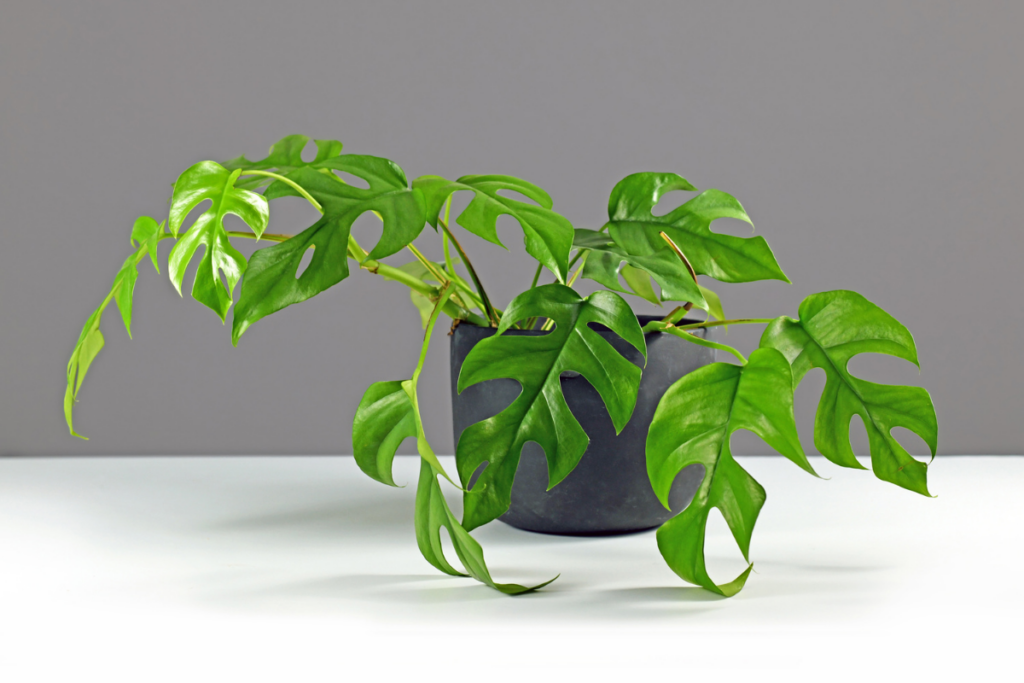
Light Requirement
Rhaphidophora tetrasperma requires filtered, bright indirect light. It may be placed near a window and even benefit from direct sunlight indoors, but outdoors, keep it in the bright shade with a hint of the morning sun.
However, you must ensure that your Rhaphidophora Tetrasperma does not grow in direct sun, which can cause the leaves to develop sunburn and turn yellow. It is not, however, a low-light plant. If it is put in a region with too little light, it will grow slowly and produce tiny leaves. Remember to add extra ambient lighting indoors.
Temperature Requirement
Rhaphidophora tetrasperma can tolerate a wide range of normal home temperatures, though it may not like excessively cold or too hot temperatures like most other aroids. Rhaphidophora tetrasperma thrives in average room ideal temperatures between 68 °F and 80 °F (16 °C and 27 °C). During the summer, you may leave them outside, but you should bring them inside during the winter.
Water Requirement
Proper watering is one of the most important requirements for the Rhaphidophora tetrasperma. During the growth season, this lovely plant likes to be kept wet. During watering, allow water to drain from the drainage hole before watering again. This plant does not like to be entirely dry, so avoid this at all costs. Allowing this to happen will cause the root system to dry and leaves to become yellow.
Humidity Requirement
The tropical plant Rhaphidophora tetrasperma thrives in high humidity. On the other hand, this plant may handle standard household humidity (usually about 30–40 percent), but it will thrive if the humidity around the plant is a little greater than normal.
Aim for a 50-60 percent humidity level directly around the plant. It will benefit immensely if you can place it near a humidifier or combine it with other plants for added humidity.
Soil Requirement
For Rhaphidophora tetrasperma, the best potting soil is aerated, nutrient-rich, light soil that drains well. Peat-based, rich soil combined with perlite, pine bark, and some sphagnum moss is the most pleasing potting mix for Rhaphidophora tetrasperma. The potting soil mix’s organic content supplies nutrients while also keeps the soil consistently moist.
When it comes to choosing the correct potting soil, the most crucial consideration is that it retains moisture while never becoming soggy or waterlogged. If water flows on the surface, it’s time to replace the potting mix or repot your plant.
RELATED: Monstera adansonii: The Complete Care, Propagation, and Watering Guide You Need
Fertilizer Requirement
Fertilizing your plants is necessary since most soils lack the essential nutrients required for optimal growth. A good-quality houseplant fertilizer works well.
Fertilize it with a balanced or high-nitrogen plant food on a regular basis during the growing season. Fertilize less throughout the winter months when growth slows. Also, avoid overfeeding your plants since too much fertilizer might cause fertilizer burn.
Space Requirement
If you have adequate room, especially in height, you may train your climbing Rhaphidophora tetrasperma to grow up a trellis or on a moss pole. When selecting a pot, make sure it is a few inches wider and taller than the plant to allow for extra growth.
Growing and Planting Tips
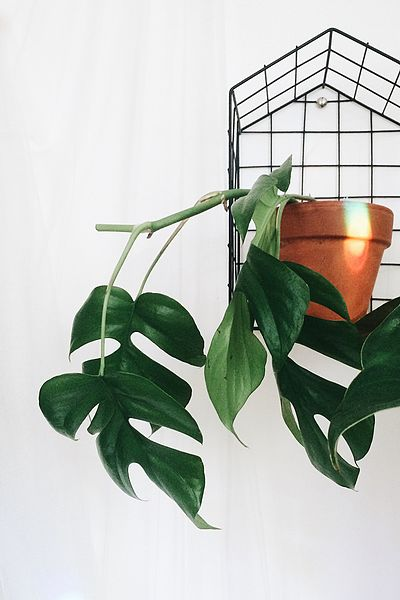
Propagation
Propagation of Rhaphidophora tetrasperma is easy and can be done in numerous ways. They can be propagated via soil, water, perlite, or sphagnum moss.
Water Propagation of Rhaphidophora Tetrasperma
The most straightforward approach to properly propagate Rhaphidophora Testrasperma. First, put the cuttings in a glass of water for tetrasperma. Then, place the glass in a room with plenty of natural light but no direct sunlight and wait for a few weeks. Again, being patient is the key.
Soil Propagation of Rhaphidophora Tetrasperma
Choose an airy aroid mixture to propagate your mini Monstera in soil. Your soil must drain well. Find some stems and cut them. Put the cuttings so that at least one node is in contact with the soil. Spraying the soil lightly moistens it. Find a bright yet indirect light source for the cuttings.
Perlite propagation of Rhaphidophora Tetrasperma
Fill a baggie or cup with perlite, then add the cuttings. Finally, fill or spray with enough water. And then wait for the roots to emerge.
Sphagnum moss propagation of Rhaphidophora Tetrasperma
This procedure is similar; hydrate the sphagnum moss until it’s damp but not drenched or flowing, then insert the cutting. Choose a stem from a mother plant with aerial roots for fast growth establishment. Just wait patiently for a new plant to grow.
Pruning
Prune your lovely Rhaphidophora tetrasperma to maintain and support the plant’s natural form and healthy growth. Cut dead and dying branches and stubs with sterile knife or pruning shears to eliminate infected or pest-damaged material. Pruning is frequently required to keep vines from having leggy growth.
Potting And Repotting
Rhaphidophora tetrasperma care requires more frequent repotting since the plants quickly exceed their pots. At least once a year, it will need to be repotted. Spring, summer, and early fall are the optimum times to repot your plants. The plant should be repotted carefully.
The ideal way to repot your plant is to use a new pot that is one size larger than the old one. Before repotting your plant, water the plant a few days before, because handling a dry plant may induce transplant shock.
RELATED: 13 Types of Monstera To Boost Your Surroundings With Extravagant Greenery
Rhaphidophora tetrasperma Care
| Light | Bright, filtered light |
| Temperature | Intermediate to warm, 68-80 degrees Fahrenheit |
| Water | Once a week, increased in summer, decreased in winter |
| Soil | Aerated, nutrient-rich, loose |
| Fertilization | Regular household fertilizer, once a month |
| Space | Plenty of space to climb |
| Propagation | Via stem cutting propagation, sphagnum moss, perlite |
| Blooming | Rarely blooms, enough sunlight and maturity needed |
| Pruning | Regular pruning |
| Potting | Regular potting mix, use of organic debris, peat, charcoal, perlite and orchid bark is recommended |
Problems And Troubleshooting
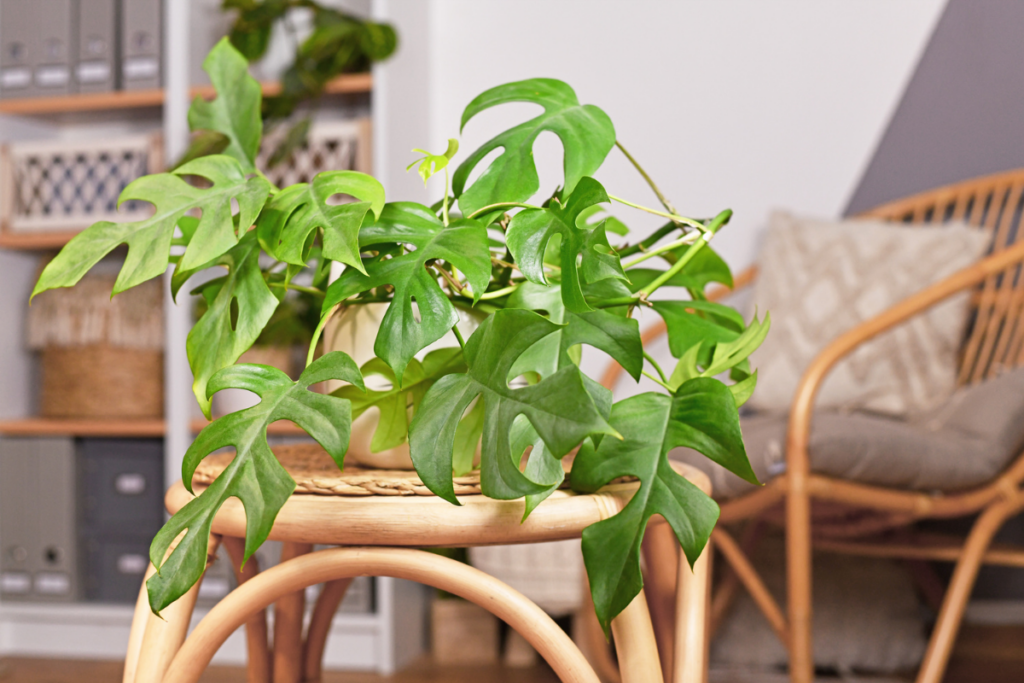
Overwatering
If you see Rhaphidophora tetrasperma has droopy leaves, it’s usually caused by a watering issue, either too much or too little. Check the moisture levels in the soil and make any necessary adjustments to your watering schedule.
Overwatering signs include:
- Yellowing lower leaves.
- Brown, yellow, or black leaf blotches.
- Withering or decaying stems and root rot.
Allow the soil to dry up before watering your plant again if it has been overwatered. Your vining plants have sensitive roots, thus careful watering is key.
Underwatering
When a Rhaphidophora tetrasperma is underwater, brown spots appear on the leaves. Symptoms include wilting, stunted development, and crispy brown areas on affected leaves. To fix this problem, Put the pot in a sink or pail of water until it is completely submerged. Keep it out of direct sunlight and softly water it until there are signs of new growth.
Nutrient Deficiency
It might be a symptom of nutrient deficiency if plants don’t grow despite proper soil preparation and watering. Symptoms of nutrient deficiency include yellowing leaves and poor development. Use fertilizer to encourage healthy plant development. Also, your plants require light, moisture, and a good soil mix to flourish.
Flowering Problem
Rhaphidopora tetrasperma seldom blossoms when cultivated as a houseplant, but it is also not a big deal. Consider the blossoming of Rhaphidophora tetrasperma as a side benefit. Since the plant’s foliage is already appealing. On the other hand, plants cultivated outdoors have a better probability of producing blossoms.
Rhaphidophora Tetrasperma Pests And Diseases
| Common Pests/Diseases | Symptoms | Treatment and Prevention |
Common diseases include crown rot, stem rot, root rot, leaf spot, fungal diseases, and Xanthomonas infection | Yellowish rimming around black or dark brown spots on leaves | Avoid overwatering. Keep soil dry. Avoid too high humidity.Proper ventilation is needed around the plant. Remove infected parts of fungal infections to avoid spreading |
Common pests include mealybugs, spider mites, aphids, and scales | Visible insects on the surface | Spray plant with warm, soapy water. If infestation is present, use insecticide or neem oil. Use diatomaceous earth. |
Problems With People And Animals
Toxicity
This plant is poisonous to both pets and people. Insoluble calcium oxalate crystals can cause acute pain and burning, rendering Rhaphidophora tetrasperma toxic. It’s a common biomineral found in plants, and it comes in various shapes. If your pet ingests this plant, they will experience oral inflammation, excessive drooling, vomiting, and mouth irritation. Make sure it’s out of reach of children and pets.
Rhaphidophora Plants Meaning And Symbolism
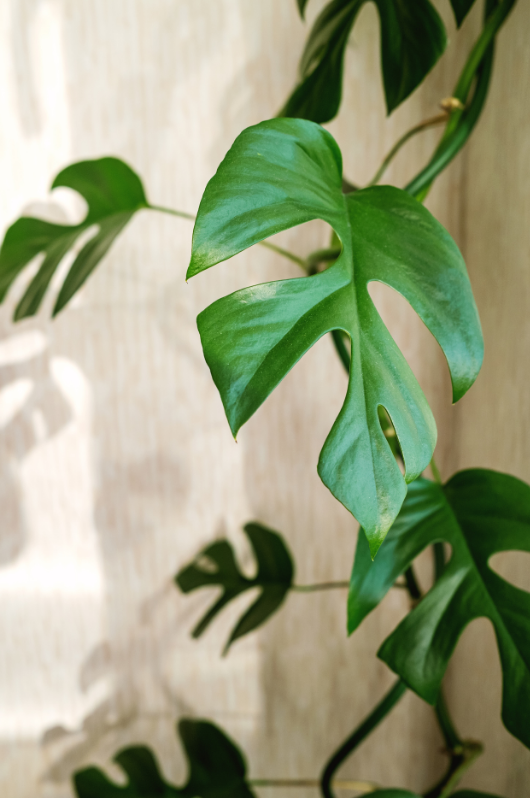
Rhaphidophora is derived from the Greek words “rhaphis” and “phoreus,” which relate to the calcium oxalate crystals found in the tissue of all aroids. Because of the fast-expanding leaf-bearing vine and aerial roots, it represents suffocation in various cultures. However, the vining habit also represents long life.
| General Meaning | Longevity of life |
| Other symbolism | Suffocation |
Landscaping and Gardening Ideas

Companion Plants
Companion planting is a great way to make your garden more efficient. This plant is a lovely addition to any room. With some companions, it will look great and be fascinating. Here are the ideal plants to grow with your mini Monstera: Schefflera, Pothos, Bird of Paradise, Areca Palms, Fire Spike, Heliconia, Variegated Arboricola, Croton, Chenille Plant, Pentas, and Philodendron species.
Landscaping Ideas
The Mini Monstera may look nice dangling from a plant shelf indoors. However, giving your plant something to climb on as it grows is excellent. A trellis, moss pole, or bamboo stake are all options.
If you have a tree in your outdoor landscape, you may let this plant grow in the trunk. You may also just hang it from its canopy. No matter where you put your Mini Monstera, it is advised that you maintain these plants in a bright shade, enabling them to have a little touch of sunlight.
| What to plant with | Other Aroids, Bird of Paradise, Areca Palms, Fire Spike, Heliconia, Variegated Arboricola, Croton, Chenille Plant, Pentas, Schefflera, Pothos |
| What NOT to plant with | Basically nothing |
Conclusion
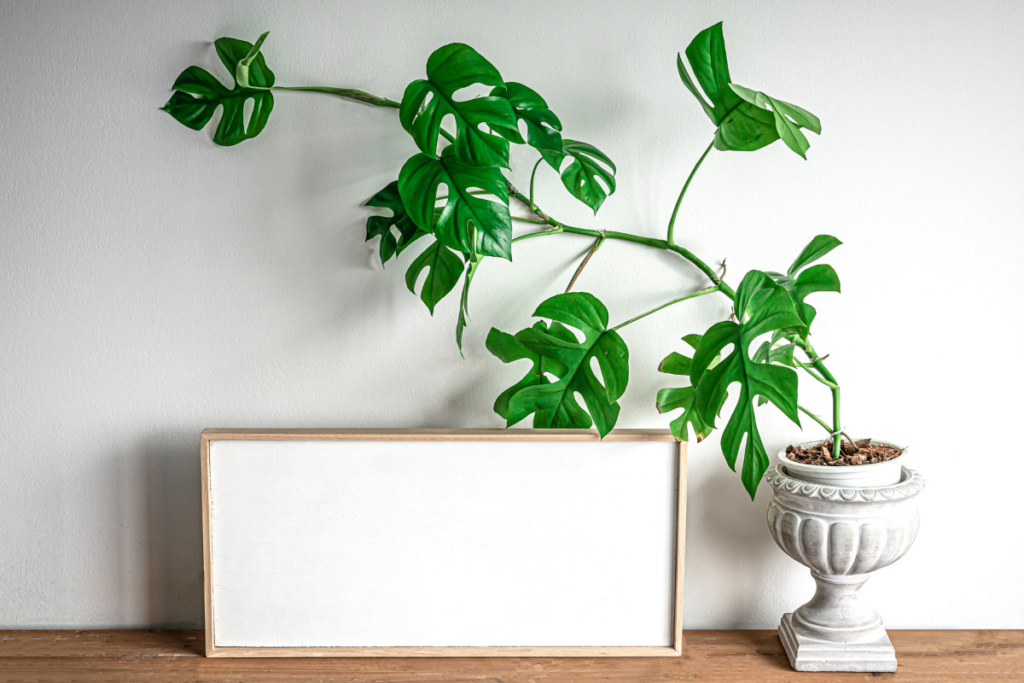
Rhaphidophora tetrasperma is a lovely indoor tropical plant with green, leafy, split leaves that resemble Monstera deliciosa or a variety of Philodendrons. This houseplant can be trained to grow on a trellis or encouraged to flow over the sides of a shelf or hanging basket and is suited to most indoor settings. It’s a tropical aroid that’s rare and stunning. And more importantly, easy to care for!
Frequently Asked Questions
Is Mini Monstera a fast grower?
The Mini Monstera plant is a medium-grower. Its growth rate depends on the light conditions it receives. If your plant gets a good amount of bright indirect light, it will surely actively grow. However, if it is placed in a darker environment, your plant will grow slowly and smaller and will lose its slits.
How do you make Rhaphidophora tetrasperma bushy?
The Mini Monsteras are easy to cultivate and maintain. You can make them bushy by regularly pruning the leaves. Pruning encourages new leaf growth, and thus will make your plant bushy and healthier. Remember to use clean, sharp scissors when you prune your plant to avoid accidents and infection.
Is Rhaphidophora tetrasperma a rare plant?
The Mini Monstera is somewhat a rare plant. Although, with the advent of tissue culture cultivation, the plant’s availability in the market has improved.
Is Rhaphidophora tetrasperma easy to grow?
Definitely yes. Tetraspermas are relatively easy to grow and care for. They can thrive in a suitable room condition provided that the optimum care and attention are given. Beginners can grow this plant.
How big does Rhaphidophora tetrasperma grow?
It depends on where the Mini Monstera is planted. The Mini Monstera can grow up to 12 meters in height atop the trees in the wild. On the other hand, indoors, it can grow 6 to 8 feet tall with 6 to 8-inch long leaves.
Editor’s Recommendations
Alocasia Bambino: A Full and Easy Care, Propagation, and Watering Guide
12 Unique Asparagus Flowers (Including Pictures)
5 Breath-taking Types Of Calathea For Your Private Tropic Corner







